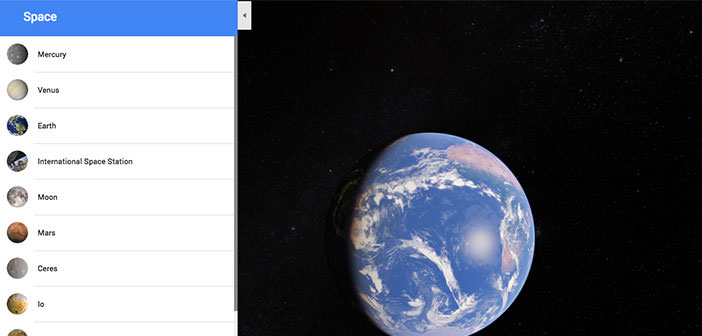Google Maps now allows you to explore the Space and the Solar System
The service now allows to visit a total of 16 celestial bodies present in our Solar System.
If, on the one hand, it is true that humanity is thinking of colonizing Mars, on the other hand, it is also true that the vast majority of men of our generation will never leave our planet. At least physically, because Google Maps now allows us to ” explore ” planets, moons and space rocks in our solar system. The company has used and combined millions of images to create three-dimensional maps of what has been captured with space missions.
In 2014 Google had added Mars on the service to celebrate the second year of the Curiosity patrols, but with the latest recent update it is possible to visit 12 other virtual worlds. In total, there are 16 places to visit: the satellites of Saturn Dione, Enceladus, Iapetus, Mima, Rhea, Titan; the satellites of Jupiter Europe, Ganymede, Io; Pluto, the asteroid Ceres, Venus, Mercury, Mars, our Moon and, of course, the Earth in all its details.
Specifically, Google used images collected during the missions organized by NASA and ESA (European Space Agency) and the predominances of maps relating to the planet Saturn are due to the huge amount of data collected with the Cassini mission, now complete. It is important to underline that not all the maps present in the collection offer the same level of detail, with highs and lows naturally due to the data currently available for the service.
In areas of the planets where you do not have extensive information, Google Maps uses a general overview of the region. However, some areas are proposed with an extraordinary detail. To embark on the interstellar tour, simply access Google Maps from this address, or make a complete zoom out on the service. In this way, on the left a menu will appear that contains all the celestial bodies that can be visited. Click on one of the items and start the tour!

